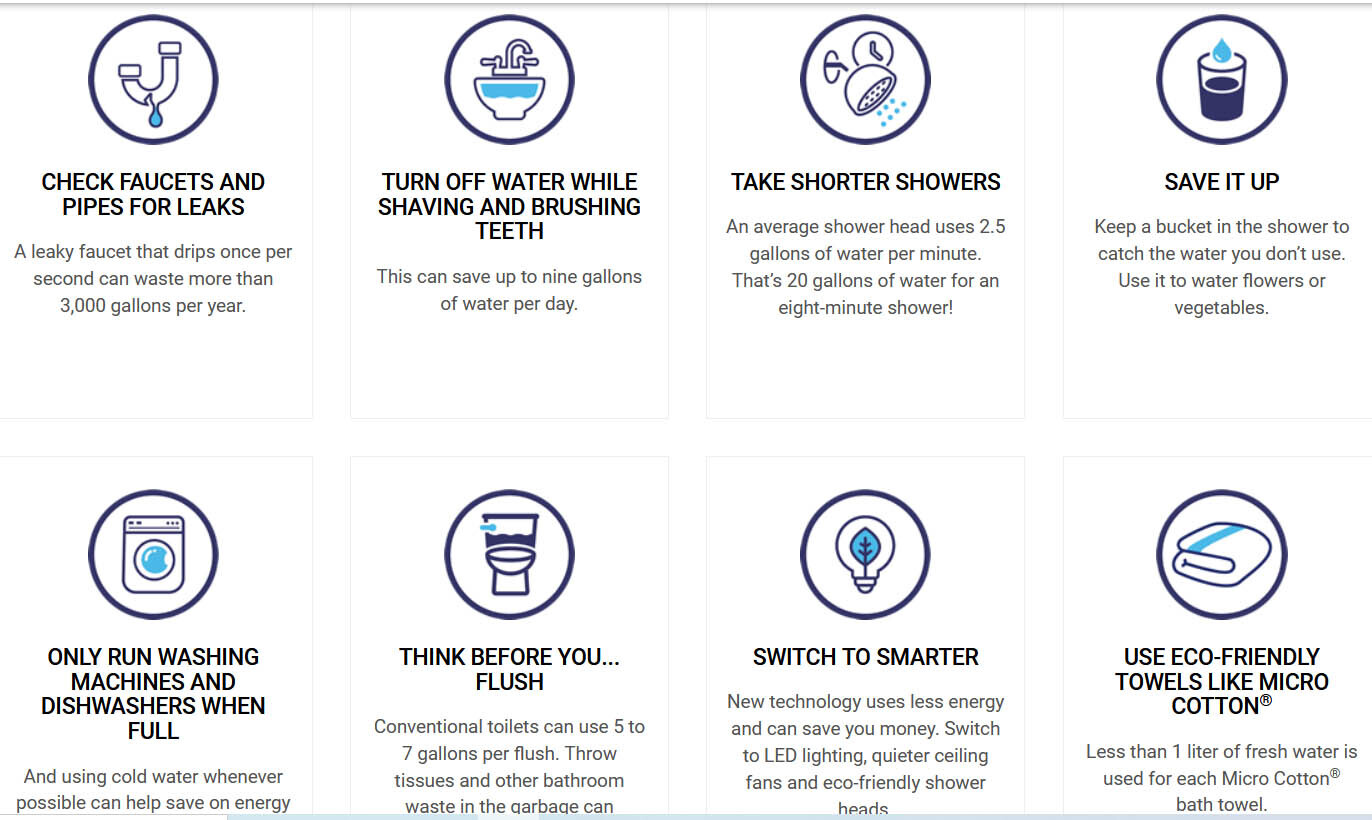
Want a chance to win $10,000 towards a sustainable bathroom (aka “powder room”) makeover project, and support Clean Water? All you have to do is sign the “Powder Room pledge.” For every pledge signed between now and the end of 2021, Clean Water Fund will receive a $1 donation, up to $25,000.
Why all this bathroom talk? Because the bathroom is one obvious place where water use really is front and center. MicroCotton, a towel and linen brand found in many U.S. stores, wanted to call attention to its corporate sustainability practices, and also to help consumers learn how their own at-home actions – in the “powder room,” specifically – could help make a difference for our water.
As MicroCotton was developing this sustainable water pledge/campaign, Clean Water Fund shared some suggestions on practical steps people can take in their own homes. The resulting tips make a great starting point for your own sustainability journey. This type of education campaign is great at reaching and engaging potentially very large audiences. But there are practical limits to how deep and detailed the information can be.
That’s why we wanted to offer this companion guide, going just a bit deeper on each of the tips to help “Powder Room Pledge”-takers conserve and protect clean water.
Let’s take these one at a time.
- Leaky pipes and plumbing. This is basic. The water coming into your home and bathroom is a precious resource. If it’s leaking (faulty, damaged or worn out pipes/joints) or dripping (faucets or fixtures need repair/maintenance/replacement), you could be sending water that is clean enough to drink right down the drain. Or, if the leak is inside the walls or floors of your house, there’s always the possibility of damage to your home and moisture-related problems like mold, mildew, rot, structural issues, or moisture-loving insect damage. If you’re on a public water supply, then you know you’re paying for every drop. When you waste it, you’re sending clean, already-treated water downstream to be treated again. If you’re on a private well, every drop still matters. And, if you’re losing hot water, then the dollar signs (and potential savings from leak repair) are multiplied. There are many occasions where saving water means saving dollars, and this is one of them!
- Turn that faucet off! If it doesn’t need to be running (like when you’re shaving or brushing your teeth, or even washing your hands) turning it off is a good way to save water and dollars. BUT, it’s still a good idea to allow your faucet to run for a bit if it’s been sitting in the pipes overnight or for a few hours, to help flush clean water through the system. After that (waiting for the water temp to change is a good way to measure how long), turn it off except when you really need it.
- Shorter showers? This need not be any sacrifice at all! Many modern showerheads have an on/off lever so you can pause the flow while you lather (if not, it’s an easy retrofit). Since we’re talking warm water here, every drop saved can mean you’re spending less heating wasted water.
- Bucket in the shower. My mother-in-law has practiced and advocated this simple common-sense action for years. It really works. Over time she’s saved thousands of gallons, and the water is used to water her plants instead of just being dumped down the drain. Give it a try. You’ll be glad you did.
- Full dishwashers and washing machines. Modern cleaning appliances are engineered to handle almost anything you throw at them. Many actually work better when filled, rather than run on partial loads. For laundry, most machines and commercially available detergents work just great on cold water – more savings for you! If this doesn’t sound like your dishwasher or washing machine, maybe it’s time for an upgrade. Newer models are often the most efficient – look for the EnergyStar label to see which ones will save the most.
- What you flush matters! If Clean Water Fund had only one tip to offer it might be this: Don’t. Flush. Wipes! Even so-called “flushable” wipes should not go down your drain. They clog pipes and cause all kinds of other problems, costing homeowners and ratepayers a small fortune to clean up an entirely preventable mess. That toilet should really only be used for one purpose. You know what it is. Nothing else goes down there.
- Lighting, ventilation and fixtures. There’s a new generation of bathroom fans that are quieter and use a lot less electricity. Same for LED lighting. Many newer faucets, shower heads and toilets are designed to work better and waste less water and energy. While we’re on the topic of energy, it’s important to remember the many ways water and climate are interconnected. As we like to remind folks, “Climate Change is Water Change.” What does that mean? It acknowledges that the same pollution causing climate change also makes water pollution and other water problems – extreme storms, flooding and drought – worse. Climate solutions can also benefit our water; simple things like efficient lighting and ventilation are great places to start.
- Products. Everything we use in the bathroom, from paper goods to personal care products to towels matters. Become an educated consumer. Avoid wasteful over-packaging and single-use plastics. Look for products and are ethically sourced and sustainably produced. Remember, so much of what we use on and in our bodies will eventually end up in our water. They’re “designed for the drain” but often without consideration for what happens when they get into our water. How might our purchasing choices change if we thought first about how they could affect our water?



